I love a campaign with a good central plot, but as much as I love those, some of my favorite times and revelations at the table come from the B-plots; those small scenes and stories that are tailored to one or a few characters. I find a place for them in nearly all my games. Over the years, I have a formula for working them into my games. So let’s talk about it…
What are B Plots?
The B-plot, according to Google, is a subplot or secondary narrative, that runs parallel to the main plotline (sometimes known as the A-plot). In RPGs, these are little side scenes or stories that you work into the session. While they can occur at nearly any time in a story, they tend to appear more when the A-plot is not actively being worked on. This could be before or after the A-plot or during a break in the A-plot.
A B-plot can center on a single character or a group of characters. My preference is 1-2 characters, otherwise, it’s creeping up on an A-plot. More about that in a few min.
In the games I run, the B-plot gets 1-2 scenes before we move back to the A-plot. However for a full table of 5 players that may be 5-10 scenes, in which the entire session could be just various B-plots. I am comfortable with that for my home games, but in a one-shot or convention game, I may not run a B-plot and if I did I would not go past 1 scene per character.
What do they do?
The B-plot can do a few things for your players and the session. Here is a short list:
-
- Spotlight Time – When you create a B-plot scene focused on just one character, you are creating spotlight time for the character. You are dedicating a portion of the game for them to shine, to have the attention of the GM and the table.
- Depth of character – Often the A-plot is about some larger thing happening in the world, and while the characters will grow by their interaction with the A-plot, with the B-plot you can narrow in on just one character and focus on their personal stories. The things you make up for these scenes and the actions the character takes will help to make the character deeper.
- Engagement – Combining these first two things…spotlight and personal stories create player engagement. The player will become more attentive and will be emotionally engaged. This will raise the quality of play at the table for that player and everyone else.
- Experimentation – A-plots have a lot riding on them, and need to progress for the main parts of the campaign to be successful. Not B-plots. B-plots can be nearly anything, something taken from the character’s background, a wish the player had, or a GM thought experiment (i.e. I wonder what they would do if someone tried to steal their staff?). You are free to try stuff out, and if something doesn’t work, no worries it was just one scene in the game, you can find something new next session.
Some Tips for Good B-Plots
These are just some of my tips for making a good B-plot. They may or may not work in your game, story, campaign, or group. Like any buffet, take what looks good…
- Simple – I keep my B-plots simple; few twists, no red herrings. They typically have a single large goal for the whole plot. For example: Chad will discover his uncle is embezzling from the family business.
- Episodic – My B-plots are episodic, meaning that whatever scene or two is played in that session, incrementally moves along the overall plot. In future sessions, the plot will be moved further until its conclusion. For example: In tonight’s session, Chad will see his uncle skulking around in the office after closing. He will have a chance to confront him or observe.
- Not tied to the main plot – My preference is for the B-plot to be something independent of the A-plot so that the player feels free to do what they want without worrying that it will affect the whole group. It also gives a break or a beat change from the A-plot.
- Only a Scene or Two – Most of the time, I have about a scene-worth of material prepared for this, and then break it into two parts to keep the spotlight moving.
- A B-plot for everyone – Every player character in my game gets a B-plot so that everyone can have some spotlight time.
- Phone A Friend – Sometimes, I like a B-plot to be for a single character, but if they want to pull others into a scene I welcome and at times encourage it.
Where to fit the B Plot?
I have a preference for where I put my B-plots. This is not the only way to do it. It is my preferred way to do it.
I like B-plots between A-plot stories (not sessions). After an A-plot story has concluded, after any leveling up, and before the next A-plot story starts, I like to put in a round of B-plots. It looks something like this:
- Session 1: A-Plot Story 1 (start)
- Session 2: A-Plot Story 1 (middle)
- Session 3: A-Plot Story 1 (end), Experience, Advancement, etc
- Session 4: B-plots & Start of A-Plot Story 2
- Session 5: A-Plot Story 2 (middle)
- Etc
This way we have finished an A-plot story, the characters have progressed, and in most of my campaigns, some time will pass before the next A-plot story starts. This place, where time has passed, is a perfect place to put in these B-plots.
It is not the only structure that works, it’s just one that is easy because the A-plot is out of the way. Depending on your game there may be other places where those could occur. For instance, if your starship was on a long warp jump, in the middle of the A-plot, you could switch to B-plots to see what the characters are doing during the jump, and then return to the A-plot as they come out of warp.
Just A Small Plot… it’s Wafer-Thin
B-plots are a nice break from the main plot of a campaign and are a great way to spotlight and build engagement in your players. Good B-plots are simple and incremental, moving along a larger plot or question, a scene at a time. An easy place to place B-plots is between larger A-plot stories, but with some creativity, you can fit them into other parts of the story.
Do you like B-plots? What is your favorite B-plot in a game you have played/run? Where do you like to run your B-plots in your overall campaign?







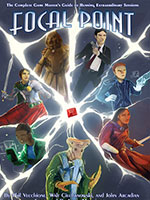
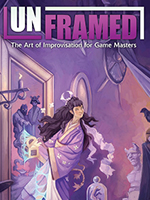

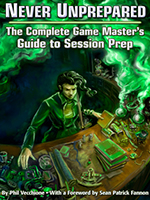
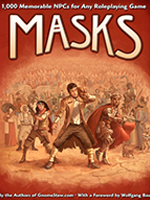
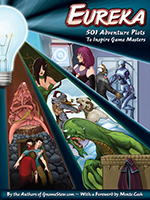

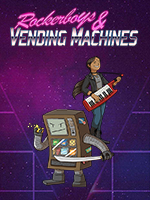
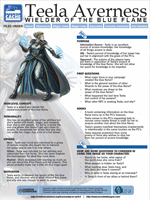
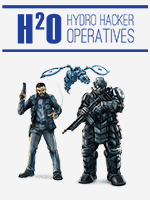
I haven’t used b-plots in any of the campaigns I’ve run, but this does seem like an interesting idea. Especially to (as is mentioned in this article) encourage engagement among players. There are so many possible nuances to consider. Thank you for the perspective.